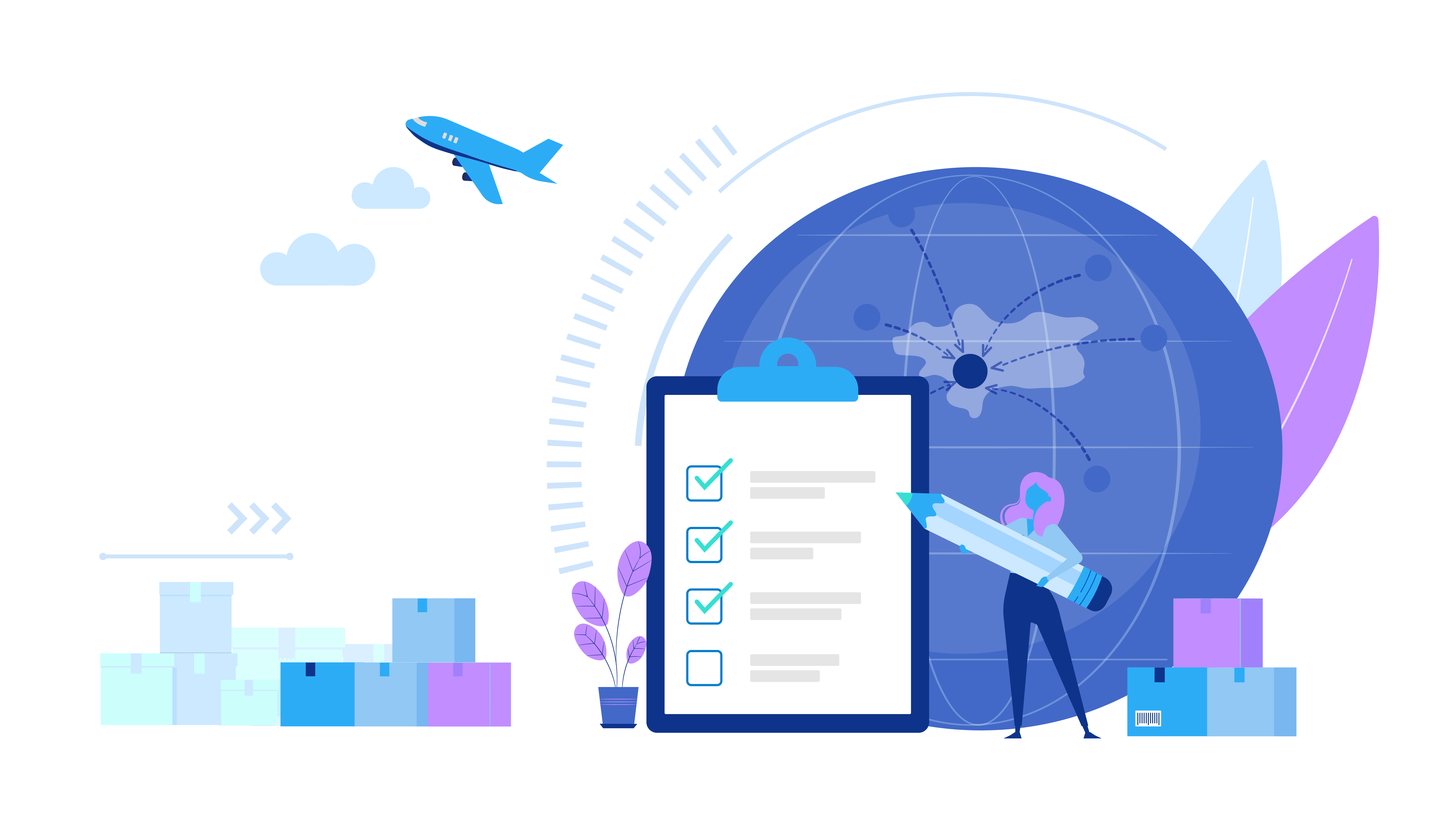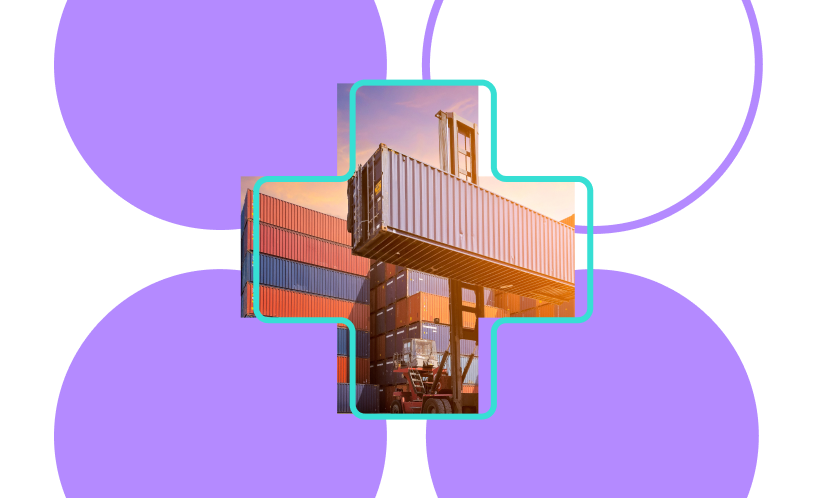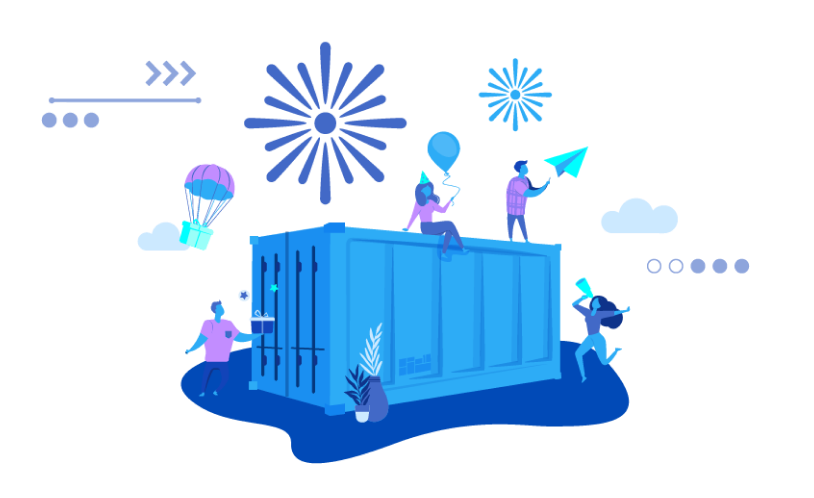Moving goods around the world is a true team effort.
From suppliers to importers and exporters to freight forwarders to brokers and more – this giant collaboration powers the supply chain.
All these people across the freight industry have an incredible wealth of shipping knowledge. So we decided to compile their insights into one ultimate guide for importers and exporters.
Read on to learn everything you need to know – from the people who know freight best.

Looking to ship freight?
Tip #1: Choose your items carefully
Greg Mercer, CEO, JungleScout
Are you looking to start an importing business? If you’re researching which goods to sell, be strategic. Aim for a product that’s affordable for most people, small and lightweight, simple to manufacture, and not tied to a particular season. Then, take a deep dive look at the competition on Amazon and try to select items with sufficient demand and limited competition, or competition that performs poorly.
Read more product research tips here
Tip #2: New to importing and exporting? No need to reinvent the wheel
Nathan Resnick, Founder now Board Member, Sourcify
If you’re creating a brand new product, you’ll need a manufacturer– that is, a factory owner who can help you build your goods from scratch. But many new importers and exporters work with traders or wholesalers instead to get their feet wet. Traders deal directly with factories so you don’t have to – and working with one allows you to work with multiple factories. A wholesaler is a company that actually buys and imports goods, which means that in addition to dealing with the factories, they also have a higher level of responsibility for your goods.
Read more about choosing the right type of supplier here
Tip #3: Want to build your brand? Try white or private label
Dave Bryant, Co-Founder, EcomCrew
If wholesaling isn’t for you and you’d like to sell a product with your own branding, one way to save on production costs is to work with an ODM, or original design manufacturer to manufacture private label or white label goods. If you’re truly creating a product from scratch, you’ll need an OEM, original equipment manufacturer.
Learn more about OEMs and ODMs here
Tip #4: Decide how you’re paying your supplier – and put it in writing
Richard Gilbert, formerly Director of Partnerships and Business Development at Payoneer
When you purchase goods from an overseas supplier, you’ll have a number of payment options. First, decide with your supplier whether you’re paying before or after production of your goods. Then, choose how you’ll pay, whether by credit card, online payment, wire transfer, Paypal, or other payment service, making sure to consider the amount of risk you assume with each method. Whatever you choose, make sure to include it in your purchase agreement to avoid arguments with your supplier later on.
Read more about payment options here
Tip #5: Get your compliances in order
Fredrik Gronkvist, Co-Founder, ChinaImportal
Whenever you are manufacturing and importing goods, it’s your responsibility to make sure they meet all standards and requirements. For example, most products require you to include the country of origin on the product (“made in China”). If you’re shipping toys, you’ll need to ensure they meet the safety standards of your destination country, and have the certification to prove it. Same goes for electronics, kitchen goods, food items, and cosmetics.
Read more about compliances here

Tip #6: Do not skimp on lab testing
Michael Bland, Senior Partnership Director, QIMA
Speaking of compliance, in order to make sure your goods meet your destination country’s requirements, it’s important to get your goods tested by independent laboratory testing facilities every time you do a production run. Don’t rely on your supplier for testing, since they are far less invested in making sure your goods are safe. Test every time to avoid costly fines and recalls.
Tip #7: Insist on samples of your goods
Shelagh Stoneham, Founder and CEO, Power WearHouse, Freightos.com User
Here’s another thing to do every time you do a production run: get a sample. Not only does this help with compliance, it’s crucial for quality control – and can save you major time, hassle, and money if you discover something isn’t right.
Read more about Power WearHouse here
Tip #8: Diversify your supply chain
Emma Borochoff, Head of Marketing, 8fig
It takes work, but cultivating relationships with a number of different suppliers and freight forwarders will pay off. Why? Because no one provider can meet all your needs. You might need to ramp up production beyond your supplier’s capacity, you might need to expand to a new location, or you could face lane congestion and need a new shipping route. Give yourself backup options to keep your supply chain moving.
Tip #9: Communicate well with providers and customers
Elis Braga, Logistics and Customs Coordinator, Hayabusa Fightwear, Freightos.com User
International shipping means dealing with numerous stakeholders, and the best way to deal with them is to establish clear lines of communication. Make sure you are in touch with your supplier, your forwarder, your customs broker, and your customers promptly and effectively. Building trust in these relationships will give you better supply chain and business outcomes.
Read more Freightos.com user tips here
Tip #10: Read reviews before choosing a freight forwarder
Tim Santoro, Operations Manager, Mouthwatch, Freightos.com user
One of the best ways to choose a freight forwarder is to read user reviews. This way, you’ll get a sense of what it’s actually like working with this provider. Make sure to check the forwarder’s performance in areas your business needs – for example, in addition to expertise on your lane and mode, maybe you need a forwarder with a particular tracking capability or communication system. Find out in advance whether the forwarder excels in these areas.
Read more Freightos.com user tips here
Get freight quotes from vetted providers
Tip #11: Get your documentation in order in advance
Ben Bidwell, Director , North America Customs and Compliance, CH Robinson
Shipping freight means submitting a lot of paperwork, which can be a hassle but should be at the top of your to-do list. Why? Getting your paperwork in order and submitting it in advance can reduce delays and inspections getting through customs. Not only that, but if you get all your documents in early (and correctly!) your customs broker can start getting your customs clearance moving before your goods are even delivered. Not sure what documentation you need? Always ask your forwarder.
Tip #12: Look for logistics providers with transparent pricing
Philip Blumenthal, Chief Transformation Officer, ECU Worldwide
As digitalization of freight booking becomes more possible, it’s becoming easier and easier to get transparent pricing from logistics providers. Don’t waste your time making phone calls and waiting for quotes from companies that may not be open about what kind of markups they’re adding to their rates. You can get better rates that accurately reflect the market with providers that offer digital, transparent pricing.
Tip #13: Don’t sit back and let your freight forwarder handle everything
Robert Khachatryan, CEO, Freight Right
Freight is tough. And you’re paying a freight forwarder to do the heavy lifting. So if something goes wrong, won’t they take care of it? The answer is yes. However, they can do a better job – and you’ll get better supply chain outcomes – if you work together with your forwarder as a partner. For example, if port delays unexpectedly keep your goods from arriving at your warehouse until after closing hours, your forwarder will arrange for overnight storage, which means hassle for them and more fees for you. But if you proactively discuss this possible scenario with your forwarder, and decide in advance what to do – pay for extended warehouse hours or arrange overnight storage? – you’ll have more control, your forwarder will face less scrambling, and you could even save money.
Read more of Robert’s advice here
Tip #14: Anticipate delays
Tiffany Platt, Founder, Shampoo Buddy, Freightos.com User
No one wants shipping delays. But sending goods around the world is an unpredictable thing: bad weather, port congestion, labor strikes, or unexpected global events can mean snags in your supply chain even with the best planning. That’s why budgeting time for delays can save you a lot of frustration, not to mention money spent trying to keep inventories well stocked. Assume your goods will arrive 1-2 weeks later than you think, and remember that a container that’s arrived at the port can still face delays in being released to your warehouse.
Read more Freightos.com user tips here
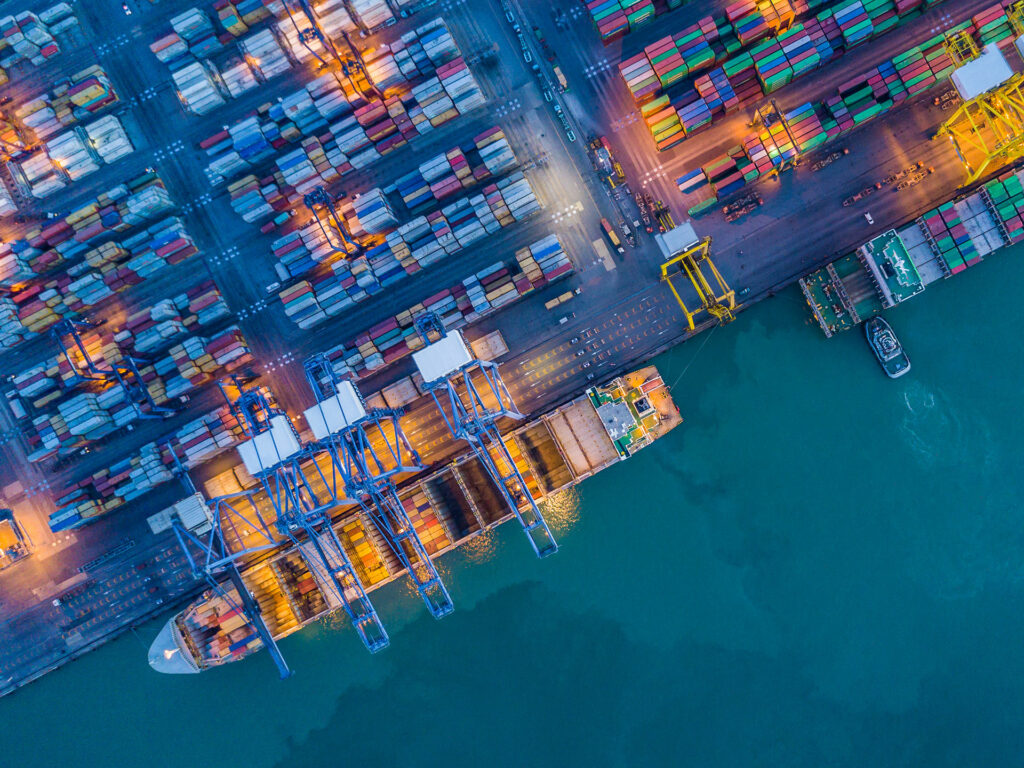
Tip #15: Plan for special equipment in advance
Michele Demitri, Lenard Healthcare, Freightos.com User
Unpreventable delays are extremely frustrating, Fortunately, some delays, such as those due to insufficient equipment, can be prevented. Does your shipment need a liftgate? A forklift? Do you need your warehouse to be open at particular hours? Work with your forwarder to plan for these requirements and you’ll avoid unnecessary delays and fees.
Read more Freightos.com user tips here
Tip #16: Get clarity on incoterms
Martin Moyano, Managing Director, Clarke Global Logistics
One of the first steps in getting your shipment moving is choosing your incoterms with your freight forwarder. Incoterms determine who has responsibility for your shipment on every leg of the journey, so this is crucial to clarify upfront. The most popular incoterms are Ex Works and FOB, but there are others to choose from as well. Talk to your freight forwarder – and get advice from other importers and exporters– to figure out which one is right for you.
Read more advice from freight forwarders here
Tip #17: When choosing your mode, think outside the container
Sam and Kristen Huebner, Founders, Parker Baby, Freightos.com Users
Most of the time, shipping by ocean is cheaper than shipping by air. But if some of your goods are light, you can benefit from shipping just those goods by air since it saves so much time without huge additional costs. Similarly, if your shipment is small, you might naturally lean towards LCL, less than a container load. But consider that LCL can take longer due to loading and unloading – and whether booking a whole FCL shipment might actually be the more cost-efficient choice for you.
Read more about Parker Baby here
Tip #18: Take accurate shipment measurements
David Kadish, Director of Operations, Primorus Worldwide
When you book a shipment, stating your goods’ correct dimensions and weight, including packaging, is crucial to getting an accurate freight quote and avoiding extra charges later. In fact, around a quarter of all added freight charges are due to adjustments for inaccurately written weight, or for chargeable weight adjustments – that is, costs that take into account both the size and weight of a shipment. Work with your supplier to get accurate dimensions the first time around to avoid lost time and money.
Read more about chargeable weight and get more tips from David here
Ready to ship your goods?
Tip #19: Include shipping taxes and fees in your freight budget
Martin Bland, Owner, Global Freight Management
When planning your freight budget, make sure to include taxes and fees, including customs fees, brokers fees, special services like liftgates, and compliances like FDA approval. Planning for these expenses will help keep your supply chain moving and help prevent unexpected charges later on.
Read more advice from freight forwarders here
Tip #20: Make sure your HS code is accurate
Adam Lewis, Founder and President, Clearit
‘One of the most important documents for clearing customs is the commercial invoice, which includes your shipment’s price, value, and description. When preparing this document, check that your HS code matches the description of your goods to avoid delays and added fees. Usually your supplier provides and HS code, but speak to your customs broker to make sure yours is accurate.
Tip #21: Make sure you choose the best HS code
Burak Yolga, Co-Founder, Forceget Digital Freight Forwarder
Speaking of HS codes, in some cases there may be several HS codes that classify your goods accurately, but their tax rates may differ significantly. Reach out to your providers to see if you’ve chosen an HS code that’s not only accurate but also is not needlessly expensive.
Read more of Burak’s advice here
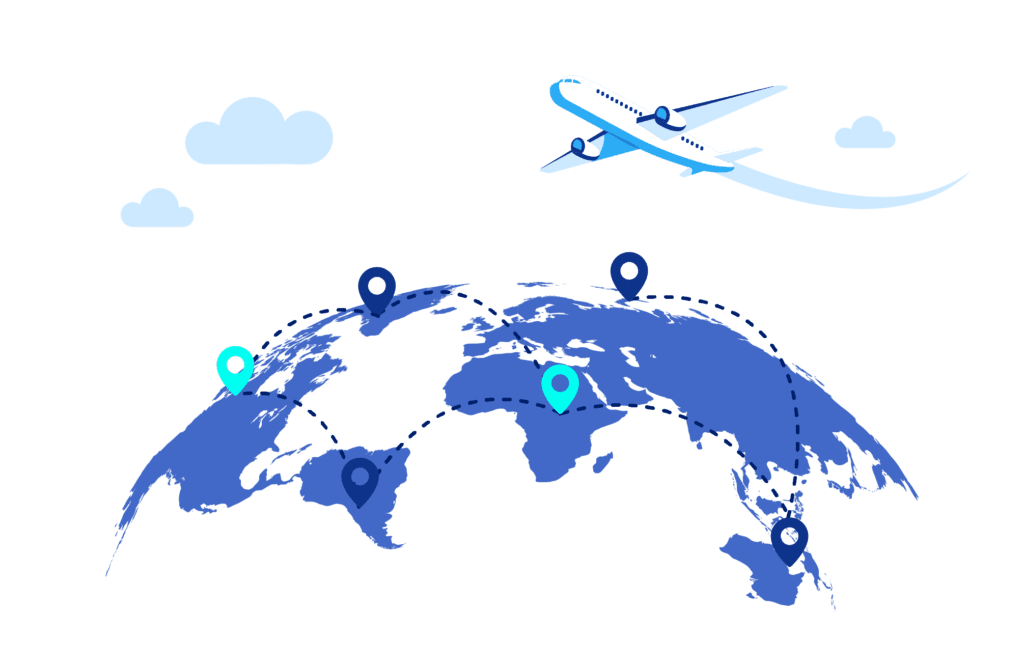
Tip #22: Watch out for expired FBA labels
Miranda Qin, Project Manager, Seabay Logistics
To ship Amazon FBA, you’ll need to create a shipping plan on Amazon Seller Central. Shipping plans expire after 90 days, which means any labels created with that shipment will also expire, which could lead to shipments being rejected at the FBA warehouse. If your goods are delayed for whatever reason, check the dates to see if your labels will expire before delivery at the warehouse. If they might, reach out to Amazon to try to get an exception, or create a new shipping plan and arrange with your freight forwarder to relabel your goods when they arrive at the destination port before they are shipped out to FBA warehouses.
Read more advice from freight forwarders here
Tip #23: Be flexible with your mode and route
Charles Marrale, CEO, Ex Freight
You’ve worked with your forwarder to plan the best shipping route and shipping mode. Unfortunately, sometimes your usual route is congested, hit with bad weather, or dealing with other delays. That’s when you want to get flexible with your supply chain. Consider shipping on a different lane and adding extra trucking, or splitting your usual FCL shipment into smaller LCL and air packages. Sometimes, a longer route or smaller shipments may actually be the faster, more cost-effective way to keep your goods moving.
Read more advice from Charles here
Tip #24: Get your labeling in order early
John Paul Makilya, US Buyer Growth, Alibaba
Goods that are imported into the US have specific labeling requirements. Some things to keep in mind: you must have English labels regardless of other languages on your packaging, you may need a best-buy date, and you might need specific labeling for your items – for example, if they’re medical goods, you might need licensing information. Take care of these requirements early on so your goods don’t get delayed at customs.
Learn more about labeling and packaging here
Tip #25: You don’t have to choose just one option for fulfillment
Michelle Mondonedo, formerly Senior Content Specialist at Easyship
When it comes to choosing between direct fulfillment and outsourcing to a 3PL, doing both might be a great option. For example, many businesses choose direct fulfillment for domestic customers and a 3PL for international. Or you might find that some direct fulfillment is worth your hands-on time while still outsourcing a good chunk of it.
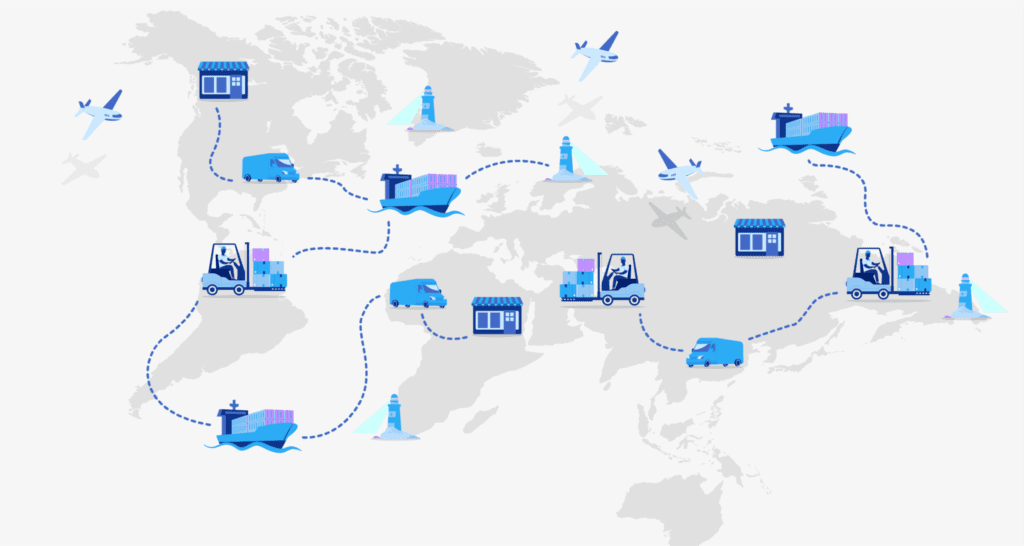
Tip #26: Don’t sell on too many channels
Eytan Wiener, CEO, Getida
It’s a great idea to diversify to different channels, but the work you put into each channel should be proportional to what you get out of it. If a channel is taking a lot of time but selling a very small percentage of your goods, focus your attention on the most profitable platforms until you’re ready to scale.
Tip #27: Make sure your fulfillment is keeping up with your business
Casey Armstrong, CMO, Shipbob
When choosing a 3PL, keep the following in mind: the type of goods you’re shipping, whether you are a B2B or B2C company, your SKU count, your shipping volume, and any extra services that are important to you. And remember – your needs might change as your business grows so reevaluate your providers periodically.
Tip #28: Don’t get caught off guard by macro-economic trends
Mike Beckham, CEO, Simple Modern
You can’t control the global forces affecting the economy (can you? If so, share tips please). But you also don’t have to be blindsided by them. When planning your pricing, take a good look at the trends that are already happening in order to predict your costs. Cost increases don’t happen overnight and neither does developing a new product. So when you’re planning a product that will ship in a few months, the trends already underway will help you set your pricing.
Hear more of Mike’s advice in our podcast, Ship Happens
Tip #29: Be nice
Hagan Walker, CEO, Glo, Freightos.com User
No matter who you’re dealing with, treating people with courtesy goes a long way. Everyone you work with in running your business, from your supplier to your freight forwarder to your customers, is dealing with the same challenge of moving goods around the world while facing unpredictable factors. Understand that and work with them rather than against them. You might even get extra great service as a result.
Tip #30: Use digital tools to save you time and money
Now that we’ve heard from importers, forwarders, sourcing specialists, e-commerce exports, and more, here’s a tip from Freightos.com. We firmly believe that freight shipping, fun as it is for us, should not take up a lot of your time. That’s why our marketplace allows you to compare rates from vetted providors in seconds, book, and manage your shipment all in one place. Whatever stage of the shipping process you are at, and no matter how big or small your business, look for providers with the tools to make your life easier so you can spend less time on freight and more time growing your business.
